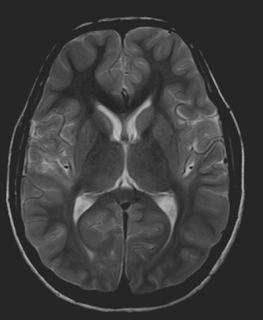32 yr adult with clinical and serology positive Dengue fever with acute encephalopathy with low platelet counts shows on CEMRI, multiple hemorrhagic focal lesions in supra and infratentorial locations with relative sparing of basal ganglia and brainstem and varying degrees of restriction and enhancement , possibly explained by different ages of bleed and therefore varying degrees of breakdown of blood brain barrier
Questions in the case
1. Thalami spared?--- variations are reported
2. Enhancement is varied in different lesions? possibly related to different ages of bleed
3. Meninges normal-- Imaging is not good enough for meningitis
4. Cord is normal?--- encephalomyelitis is only known to occur in some
5. Is comorbidity possible with some other infections?—certainly possible, but since serology and CSF are negative, less likely
Teaching points for Radiologist by Dr MGK Murthy. Images by Mr Hariom and Mr Venkat.
· Dengue fever occurs in about 100 countries ,and is caused by RNA virus of Flavivirdae family
· Non-neurotropic nature of the virus is now questioned with some growing from CSF
· Neurology involvement can be encephalitis (direct virus effects) or more common encephalopathy (usually metabolic, hypotension or haemorrhage related findings)
· CSF serology an virus culture are considered as gold standard
· MRI plays crucial role in altered sensorium patients to exclude other causes as well show focal lesions apart from severity and nature
· Viral encephalitides have predilection for certain
sites as below :
HSV: Frontal, Temporal lobes
Japanese Encephalaitis: Thalamus, basal ganglia, cerebellum, brainstem
West Nile fever: Deep grey matter, mesial temporal lobe, cerebellum, brainstem. Difficult to differentiate from JE on imaging alone
Rabies: Hippocampi, basal ganglia, brainstem , temporal lobes.
Chikungunya: cingulated gyrus, Limbic system
Nipah: multiple white matter lesions.

















































